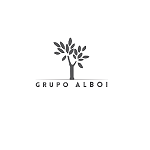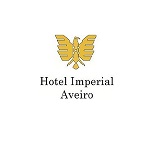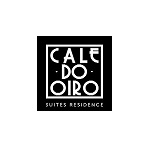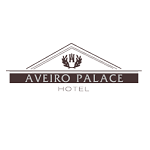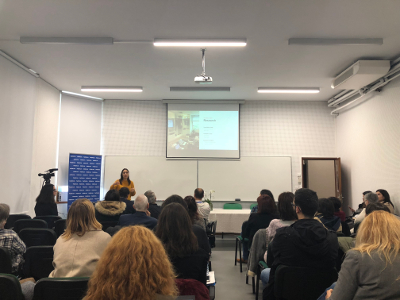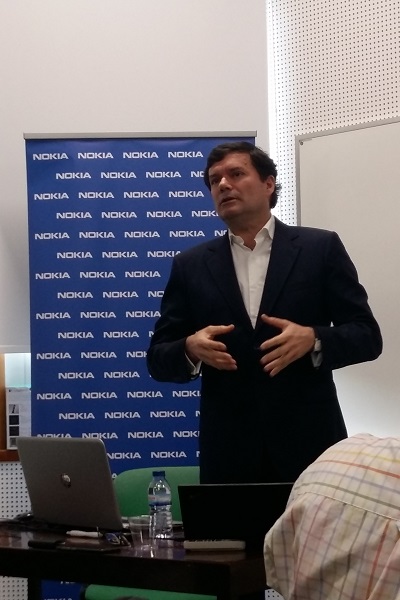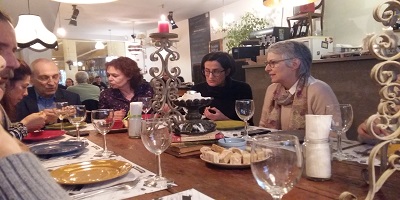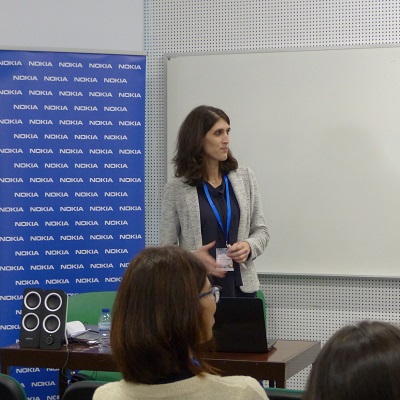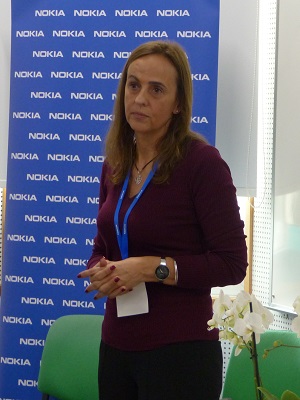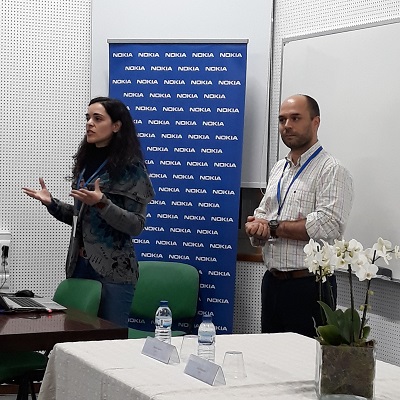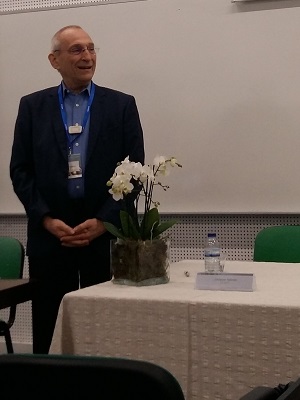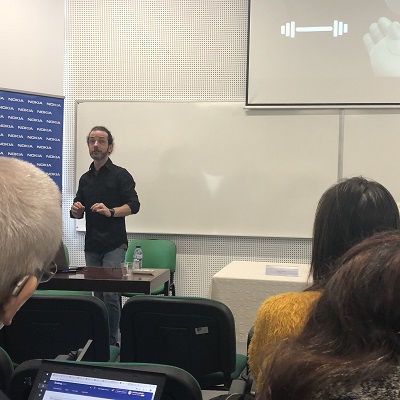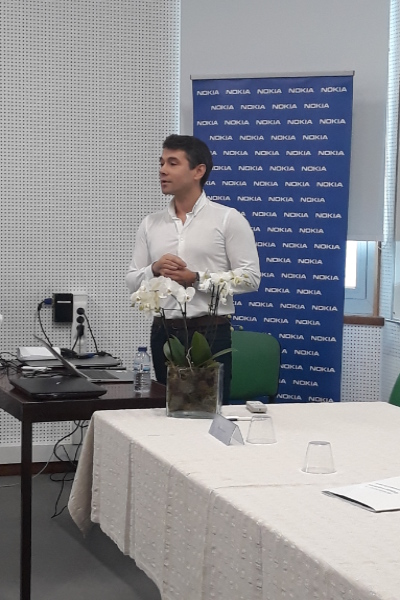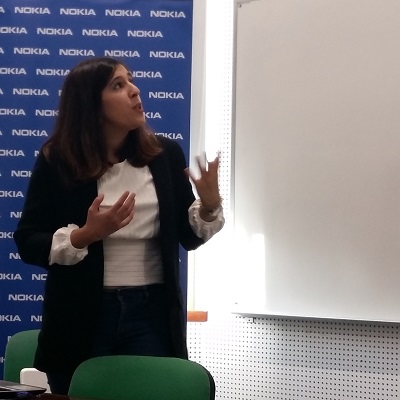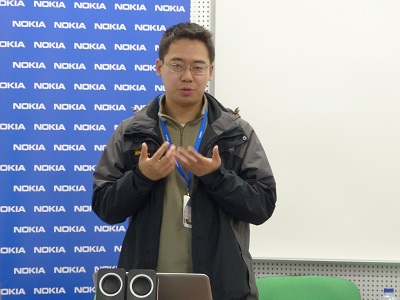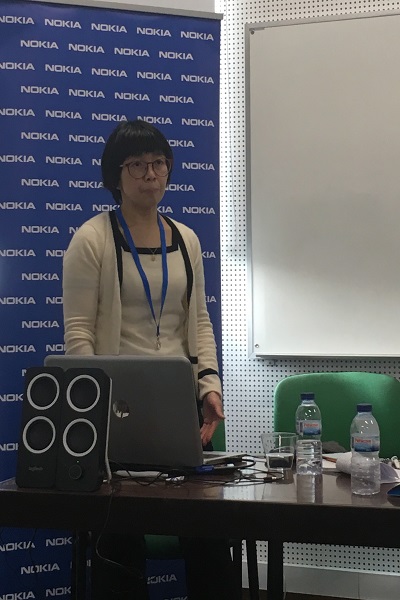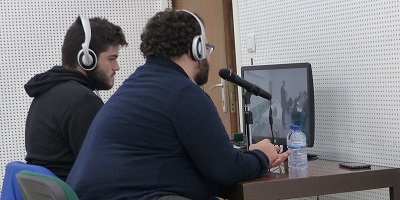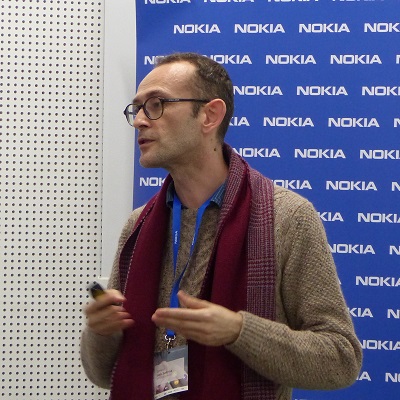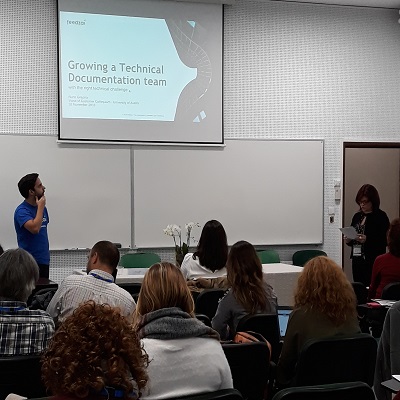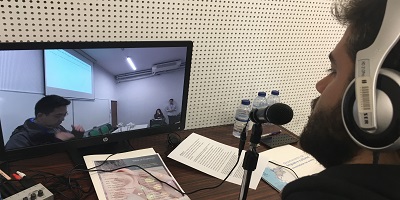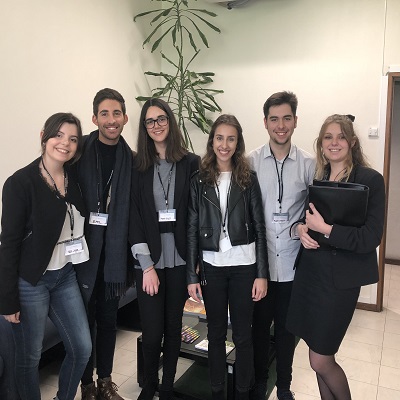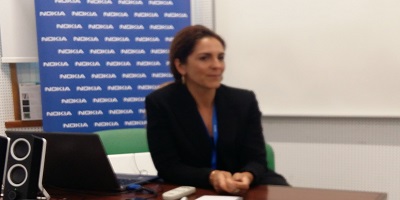-

 29-30 November 2018University of Aveiro
29-30 November 2018University of Aveiro Registration dates:Speakers: 14 September 2018
Registration dates:Speakers: 14 September 2018
Participants: 15 November 2018Join the conference
We are waiting for you
Voice of Customer 2018
With this Technical Communication Colloquium, we aim to bring together
those who work for customers and the customers themselves,
in order to attend to gaps, share ideas, and reflect on new ways of doing more and better.
Topics
- Technical Documentation and Translation
- Quality in the Terminology workflow
- Communicating persuasive technology
- Training materials
- Marketing materials
- Technical support
- Needs assessment
- Quality Faults
- Content validation
- Customer Perceived Value
- User experience
- Gamification
- Media channels
- Chat bots
- E-commerce
- Augmented reality
- Accessibility
- Troubleshooting
Keynote Speakers
Valuable contributions from people with
strong experience in the voice of customer fieldMultilingual Support
English and Portuguese multilingual support
Coffee breaks
Time to talk, connect and share:
thoughts, experiences, ideasSpeakers
Keynote Speakers
-
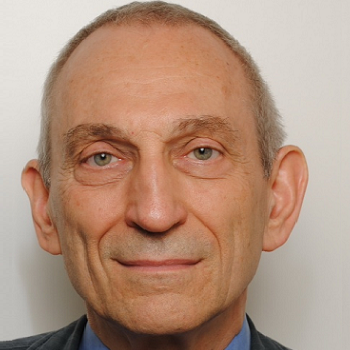
Christian Galinski
Director
Infoterm
-
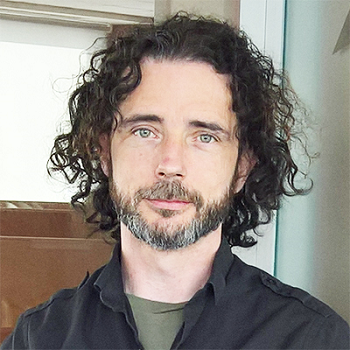
Jody Byrne
Head of User Assistance
Prototyping
SAP Ireland
-

António Câmara
Professor
Univ. Nova de Lisboa
-
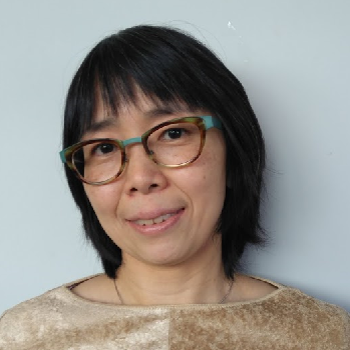
Naoko Ito
Customer Documentation
Specialist
Nokia
Christian Galinski
C. Galinski studied Japanese and Chinese as well as I&D (information and documentation) and applied linguistics at the Universities of Bonn and Vienna.
In the mid-1970s, he pioneered in technical documentation in industry focusing on Japanese. Research and professional technical writer in Inforterm, ISO, IGO, CEN, and others.
EU projects in which he participated on behalf of Infoterm, focused on technical communication aspects, the role of language services and the language industry, language and terminology policies, recently also on communication with and among persons with disabilities (PwD), as well as pertinent standardization activities.
Since many years C. Galinski works as consultant for national, European and intergovernmental organizations (IGO) as well as numerous non-governmental organizations (NGO) world-wide, including ISO.
He is the author of many publications in the field of terminology and related fields, including different kinds of structured content (here in the meaning of microcontent) and its role in eBusiness and eCommerce.
Jody Byrne
Jody Byrne is a technical communication professional with 20 years’ experience as a technical translator, author, lecturer, video producer and user assistance consultant.
He has written numerous publications, including two books, on technical communication and translation. As a UA Development Architect for SAP Ireland, he is head of the User Assistance Prototyping Lab, which researches and develops new ways of communicating technical information.
António Câmara
António Câmara is a Professor at the Universidade Nova de Lisboa.
He obtained his degree from IST (1977), and his PhD in Civil Engineering from Virginia Tech (1982). He was a Visiting Professor in Virginia Tech (1988), Cornell University (1988-89) and MIT (1998-99).
António Câmara was a pioneer in researching simulation, geographical information systems, virtual reality and augmented reality. He has over 200 international publications, including the Environmental Systems book, (Oxford University Press, 2002).
He mentored 31 PhDs in Portugal, and was a co-mentor of 6 others in Georgia Tech, Virginia Tech, MIT, Pompeu Fabra and Free University of Amsterdam.He has co-founded three companies internationally listed: YDreams Global (listed in Toronto and Frankfurt); Azorean (Euronext Paris); and Ynvisible (Toronto). He has also co-founded The Inventors and Aromni.
These companies developed over 1300 projects in 30 countries for 50 companies of Fortune 500. His activity has been reported in the main global media.António Câmara has received over 20 national and international awards, highlighting Prémio Pessoa in 2006, and one of the Entrepreneurs of the Year Awards from the European Union in 2008.
Naoko Ito
Naoko Ito is a Customer Documentation Specialist at NOKIA, working also as Project Manager and Voice of Customer Workgroup documentation expert.
Naoko started her path over 20 years ago in NEC Corporation, in Japan, leading a research project on web content adaptations for different user environments.
While in NEC, she also developed monitoring systems in the customer trial field, and contributed to several Japanese National Projects, including IT use in the agricultural field and commercial use of ubiquitous technologies.
Her competences involved planning of projects, enforcing research activities and promoting the results to the company internal and external customers, in Japan and Europe.
She was one of the company representatives in multiple international standardization organizations. Moreover, she also translated technical documents and books.
She has a Master degree of Science in Engineering from the Keio University, in Tokyo.
Confirmed Speakers
-
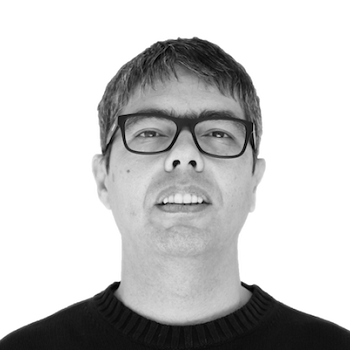
Nelson Zagalo
Associate Professor
University of Aveiro
-
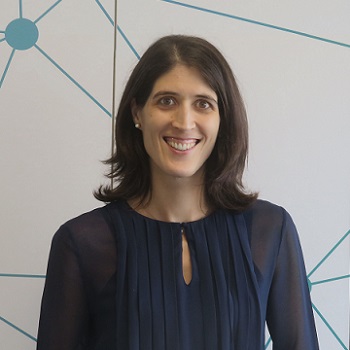
Ana Rita Remígio
Technical Communicator
Bosch Building Technologies
-
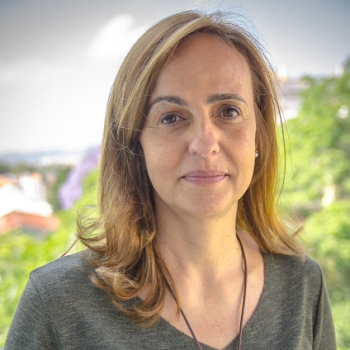
Ana Oliveira
Chief Inspector
ASAE
-
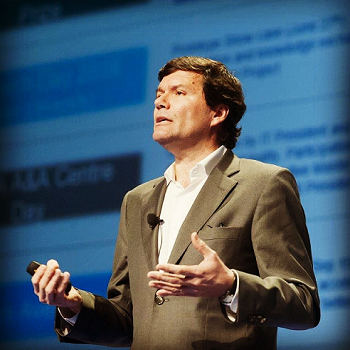
António Oliveira
Customer Quality Manager
Nokia
-
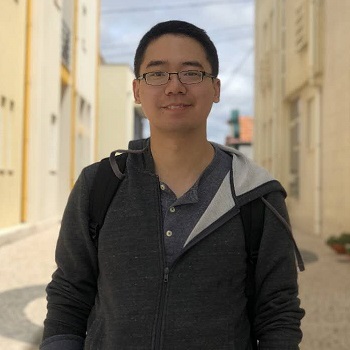
Zhihua Hu
Translation and Terminology
PhD Student - UA and UNL
-
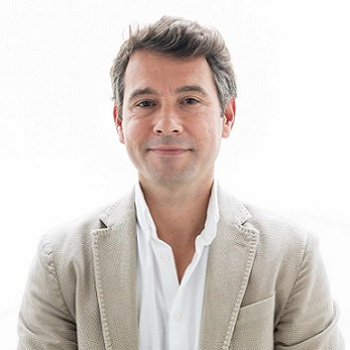
Miguel Gonçalves
Founder and manager
E-goi
-
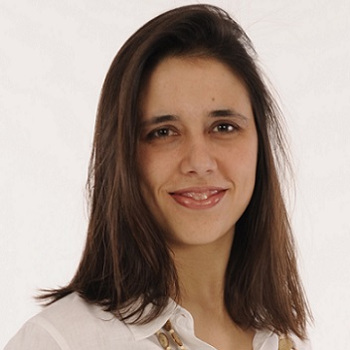
Rute Costa
Head of Product
Farfetch
-

Luís Salema
Lecturer and Researcher
Camões Institute
-
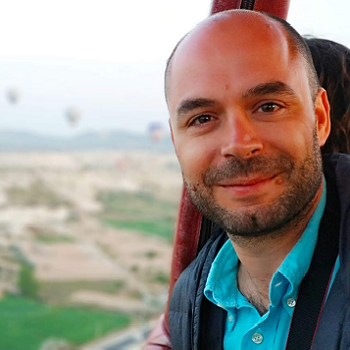
João Marques
Communication Specialist
Nokia
-

Cláudia Santos
Communication Specialist
Nokia
-
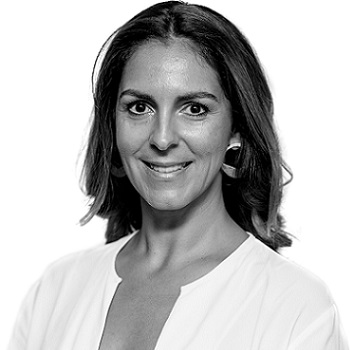
Denise Branco
Translation and Terminology
PhD Student - UA and UNL
-

Krisztina Nagy
Technical Writer
Feedzai
-

Sara Duarte
Technical Communicator
Feedzai
-

Nuno Grazina
Technical Knowledge Manager
Feedzai
-
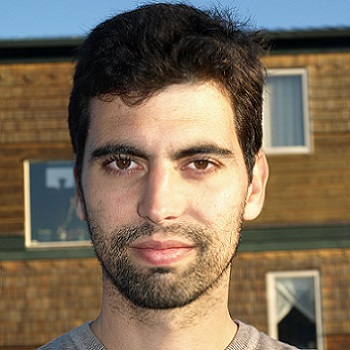
Luís Melo
Technical Communicator
Feedzai
-
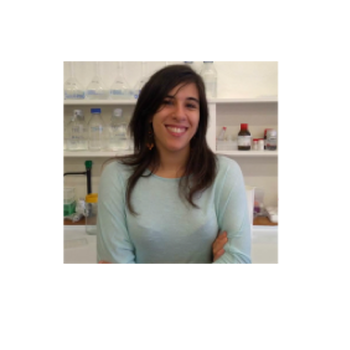
Rita Francisco
PhD Student UNL
EUPATI
Nelson Zagalo
Nelson Zagalo is an Associate Professor at the Department of Communication and Arts, with over 15 years of experience in research.
He established the engageLab Laboratory, while at the University of Minho-Portugal in 2009, and founded the Portuguese Society of Sciences of Videogames also in 2009.
He has more than one hundred peer-reviewed publications in the fields of games and human computer-interaction. He served as technological and scientific consultant for companies, European and national funding programs, and accreditation of higher education courses.
He is the editor of the blog Virtual Illusion, and has published the books "Interactive Emotions, from Film to Videogames" (2009), “Videogames in Portugal: History, Technology and Art” (2013), and "Creativity in the Digital Age" (2015).
Ana Rita Remígio
Ana Rita Remígio is a technical communicator for Security Systems at Bosch Building Technologies. She is responsible for the creation and maintenance of technical documentation, including translation management into 45 languages.
Ana Rita holds a PhD in Terminology and a Post-graduation in Computer-Assisted Translation. Her background also comprises close contact with technical fields:
for over 8 years she worked in the fields of technology transfer and industrial property, meeting regularly with inventors, professors, researchers and CEOs. She is the Vice-President of APCOMTEC.Ana Oliveira
Ana Oliveira is Chief Inspector of the Portuguese Food Safety and Economic Authority. From 2001 to 2005 she worked in the information, documentation and public relations department of the General Directorship of Inspection and Control of Food Quality.
Since 2006 she has been working in public information of the Economic and Food Safety Authority (ASAE), currently she coordinates the analysis of all complaints received in ASAE (economic and food safety). She is responsible for promoting the dissemination of information related with issues in its scope of action (enforcement activity, results, general information for the associated businesses, economic operators and consumers). She is also responsible for contacts with the media and preparation of informational materials (videos, presentations, flyers) about the activities of the Food Safety and Economic Authority. She is also responsible for ASAE’s website and page in social media.
Since 2008 she is the editor of the ASAEnews – a journal on the activity of ASAE focused on informing consumers, economic operators, journalists and other official entities.
António de Oliveira
Current responsibilities: Country Senior Officer Deputy of Nokia Portugal, Customer Quality Manager, Market Unit Central Europe, Central Asia & Mediterranean.
Academic: Electronic and Telecommunications Engineering (1981), Post-graduation in Quality Engineering (1989)
Business activity: More than 30 years’ experience in the Telecommunications sector in companies like Siemens and, since 2007, in Nokia.
Associative engagement: Active participant as board member both in the Telecommunications and Quality National Associations during last two decades (APQ, CEQUAL, APDC, APCER, COTEC).
Zhihua Hu
Translation and Terminology PhD student in the University of Aveiro and University Nova of Lisbon.
Has a Master degree in Languages and European Literature (Portuguese Language) by the University of international Studies of Xian, China.
Worked as an engineer-translator in a state company in the electrical field in China, and was responsible for technical documents translation and creation.
His main research fields are: corpus based translation; translation theories; technical writing; terminological studies; contrastive linguistic.
Miguel Gonçalves
Miguel Gonçalves is the founder and manager of E-goi, a plataform of multichanel marketing automation, a SaaS B2B from Matosinhos (Oporto) to the world, dedicated to digital and marketing communication that integrates Email, SMS, IVR, Push mobile, Web Push, Landing pages, Forms and Social Networks.
E¬goi has about 70 collaborators, and expects to bill around 10 Millions of Euros in 2018 e has tens of thousands of active users.
Miguel studied Marketing management in IPAM in Matosinhos, and Electrical and Computer Engineering in the Faculty of Engineering of the University of Porto.
Rute Costa
Rute Costa has continued experience in strategy, product management and project management, namely in technology: e-commerce, websites, mobile applications and cloud services.
Before Farfetch, she worked at Grupo Pestana as Head of E-commerce, and at Portugal Telecom, where she had different roles in over a decade, playing a leading part in several of the company’s product management teams.
Rute Costa holds an MSc in Economics and an MBA from Nova School of Business and Economics in Lisbon, where she built a thesis on Strategy and Organization Behavior.
Luís Salema
Luís Salema is a Portuguese, Latin and Greek teacher with 20 years of experience. He has been teaching at several secondary schools, at the University of Algarve and at University Aberta. In higher education, he taught curricular units in the areas of Portuguese language and culture, organization of documentation in libraries and tools for multimedia educational communication. He currently works in Camões, Institute of Cooperation and Language, in the Programming, Training and Certification Division.
PhD student in Translation and Terminology, University of Aveiro and Universidade Nova de Lisboa, develops a project that combines terminology and technical communication in the area of meteorology, with the collaboration of IPMA - Portuguese Institute of the Sea and Atmosphere.
He holds a master's degree in linguistics and a postgraduate degree in information management and school libraries.
His main areas of research are linguistic variation, terminology and technical communication.
João Marques
João Marques academic background is in the Multimedia and Interactive Medias field, as well as in Medical Informatics.
He has professional experience in customer and user experience, digital medias and marketing applied to different industries: education, retail & distribution, health-care and telecommunications.
Currently, João is working as Customer Documentation Specialist at Nokia, and is a member of Voice of Customer and Communication workgroups.
João is a futurist, and has a passion for the digital world. He is always trying to find disruptive solutions and new approaches to make the digital transformation in the companies, and in the relationship between the companies and the Users/Customers, including virtual reality and gamification.
Cláudia Santos
Cláudia Santos is a Team Leader, Communication Specialist and Technical Writer at Nokia.
She started in Nokia in 2007 as a technical writer in the hardware field. She then moved to software, and has been working as Customer Documentation Project Manager in several projects located in different countries. Claudia has worked with teams from all over the world: Finland, Germany, India, USA, Poland, Hungary, Portugal, among others.
She has also participated in several workgroups, being an active contributor for the Nokia Software Technical Communications Style Guide. Currently, she is the Project Manager of the Voice of Customer workgroup.
She holds a Master Degree from the University of Aveiro in Technical Translation and Terminology.
Denise Branco
Denise Branco is a trained language teacher, holds a Master in Linguistics with a specialization in English for Specific Purposes and is currently writing her PhD thesis in Translation and Terminology, focusing specifically on the role of translation and interpretation in the transfer of technical and scientific knowledge.
After teaching English and Portuguese for Specific Purposes at the University of Aveiro for approximately ten years, she founded her own language service company in 2007. Since then she has been working with international industry and government bodies in the field of technical and scientific communication in the field of nuclear safety and security.
Krisztina Nagy
Krisztina is a Technical Writer at Feedzai.
Since her studies in programming, she has been working in several market-leading companies like Microsoft, OutSystems and Vision-Box. In these companies, besides gaining an overview of how the information flows within a corporation, she learned the nuts and bolts of Technical Communication and had the opportunity to get involved in the User Experience field as well.
Sara Duarte
Sara Duarte holds a degree in Translation, and a Master degree in Specialized Translation of Legal Sciences from the University of Aveiro.
She started her professional path as a translator in a start-up company, with a mission to develop a platform of online commerce for companies. During that experience, and with the constant development of the project needs, she was in the creation of Technical Communication inside the company, and hold that position for about four years.
Currently, she works as a Technical Communicator at Feedzai.
Nuno Grazina
Nuno Grazina is a Software Engineer by education but was never a great programmer, so he started developing an actual career in Technical Communication in 2011.
Having learned how to transform complex concepts into simple explanations, he has been applying those skills to software documentation ever since, from the low level technical details up to solution design and business support.
Currently, he heads all product technical knowledge initiatives at Feedzai. The Technical Communication team delivers the docs for several components and solutions, and the entire technical training program as well. Other than delivering great content and helping scale the company, his main mission has been developing and sharing collaborative practices that enable anyone to write the docs (yes, engineers can write!), and make apparent the often overlooked value of software documentation.
Luís Melo
Luis received his M.Sc. degree in Engineering Physics from the University of Aveiro and his Ph.D. in Mechanical Engineering from the University of Victoria, Canada. He conducted research on fiber optic sensors for detection of chemical species.
His mission on the sensors area was completed, and so he changed the course of his career and started working in software companies. He started at Accenture as a developer and then found a new passion for technical communication at Feedzai.
His biggest motivation is to connect technical writing with other fields such as design, user experience, user interaction and find new ways of communicating technical concepts to target audiences.
Rita Francisco
Rita Francisco holds a Masters’ degree in Molecular Genetics by the University of Minho. She is currently doing her PhD focusing on better understanding immunological affectation in Congenital Disorders of Glycosylation (CDG) patients. Her work is developed under the scope of the patient-led research network CDG & Allies – Professionals and Patient Associations International Network (CDG & Allies – PPAIN, http://www.researchcdg.com/) . Rita is also a volunteer at the Portuguese Association for CDG (APCDG, http://www.apcdg.com), where she is the CDG patient advocate manager.
Currently, she is one of trainees of the 3rd edition of the European EUPATI Expert Training Course and a volunteer at EUPATI Portugal.
Affiliation: UCIBIO, Faculdade NOVA de Lisboa; CDG & Allies - Professionals and Patient Associations International Network (CDG & Allies -PPAIN); The Portuguese Association for CDG; EUPATI Portugal
PROGRAM
Our two days program
09.00
09.15
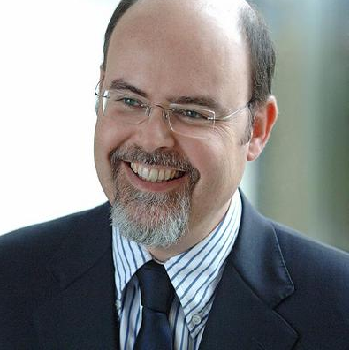
Head of Region Sales Management - Nokia
João Picoito
20mins
About João
He started his path in Alcatel in 1987, and moved to Siemens AG in Munich where he was responsible for the Communication Protocol Design and Network Planning area. Currently he his the Head of Region Sales Management.

DIRECTOR - INFOTERM
Christian Galinski
Usually the voice of the customer is heard, when they complain. If they complain in masses, immediate action has to be taken in order to avoid big losses in terms of returns to be refunded, administration workload of handling complaints, legal issues involved, coordination efforts with distributors – ultimately loss of user trust. Increasingly technical documentation (on various media – more and more multilingual) has a decisive function with respect to user satisfaction. In this connection, texts may be micro-texts (such as SMS) or technical manuals, user manuals, etc. Content consistency throughout texts whether written or spoken (e.g. used in hotlines) is crucial between the languages and within each language (not to mention language varieties). How to ensure text quality across languages and media? More than beautiful prose, microcontent entities must be managed in a proper way. Given the fact that same or similar microcontent entities are used all over texts in industry related to products or services, its consistency throughout the enterprise facilitates communication, improves the quality of texts, may reduce legal issues and potentially enhances customer satisfaction. Properly managed information-enriched microcontent entities based on methodology standards may turn out to be less costly in the long run. Furthermore, legal requirements for the protection of customers are getting tougher, intellectual and industrial property rights may be looming. The presentation will discuss various approaches and new standardization efforts that have an impact on technical communication and technical documentation in industry.
45mins
About Christian
He is the author of many publications in the field of terminology and related fields, including different kinds of structured content and its role in eBusiness and eCommerce.
10.50
11.15

FOUNDER AND MANAGER - E-Goi
Miguel Gonçalves
Como um SaaS com muitos milhares de clientes à distância, gere os desafios de tentar superar as suas expectativas para os satisfazer. Algumas estórias e exemplos de como a E-goi tenta perceber a razão e forma de melhorar desempenhos de experimentação, conversão, desistência ou insatisfação.
Sendo a missão da E-goi, a criação de ferramentas para que as marcas entendam e comuniquem melhor com os seus públicos e clientes, que soluções é que está a desenvolver? A comunicação multicanal e bidireccional é essencial, mas a automatização de processos também o é, sendo a inteligência artificial a peça que faltava para unir e potenciar ainda mais estas duas funções.
30 mins
About Miguel
Miguel studied Marketing management in IPAM in Matosinhos, and Electrical and Computer Engineering in the Faculty of Engineering of the University of Porto.

TECHNICAL COMMUNICATOR - Bosch Building Technologies
Ana Rita Remígio
Strengthening customer identity: one look one feel approach to 4.0 technical communication in a global multi-product company
Building and maintaining customer identity is key in business success and goes beyond branding. Technical documentation plays a crucial – yet many times apparently silent – role in the trust bond between a company and its customers. Documentation supports the product and guarantees its installation and use to the fullest extend. However it is not just about consistency in communicating. It is also about having the right information at the right place and at the right time.
Bosch Building Technologies offers solutions for security and safety systems, including video surveillance, intrusion detection, fire detection and voice evacuation systems, as well as access control and management systems, professional audio and conference systems. Adding to different products from different business units, at different locations and with different stakeholders, are different brands – such as Dynacord, Electro-Voice, RTS and Telex – and partner brands, like Sony, for video security. In this scenario, strengthening customer identity becomes challenging.
Less than one year ago a multidisciplinary team was created in Ovar, with the aim of developing and applying a one look one feel approach to technical communication for Bosch Building Technologies. This approach implies not only rethinking the way of working of a global team of technical communicators, but also developing standards for writing, terminology, and design and for information management and modelling, and leads the way to Technical Communication 4.0.
We know that information consumption is changing. Alike demand for smart factories and global digitalization brought about by Industry 4.0, our customers demand and expect granular and tailor-made access to content. This is why we built our business model on a strategy for dynamic content delivery, via intelligent information: information that is modularized, enriched with metadata, and framed within a standardized knowledge structure.
And this is when all dots connect and we place documentation alongside packaging, labelling and training, having teams working together and offering a complete and unique product-related solution to our customers.
30mins
About Ana Rita
Ana Rita Remígio is a technical communicator for Security Systems at Bosch Building Technologies. She is responsible for the creation and maintenance of technical documentation, including translation management into 45 languages.
12.15

PHD STUDENT - UA AND UNL
Zhihua Hu
A Análise de Rótulos de Champô nas Versões Portuguesa e Chinesa: a divergência de prioridades em Comunicação Técnica
O rótulo de produto constitui uma designação coletiva adotada para indicar várias formulações e instruções sobre os produtos; concretamente, os rótulos são compostos por informação variada: nome do produto, local de produção, nome e localização da empresa produtora, os principais componentes do produto, as especificações e referências, bem como a data de produção, o prazo de validade e os avisos. Os rótulos podem ser indicados nos produtos ou nas embalagens dos produtos e podem integrar textos, símbolos, números, figuras ou outras descrições. O conteúdo da rotulagem deve estar em conformidade com os requisitos das normas nacionais.
Tem havido atenção generalizadora e crescente na análise de rótulos, dado que, por um lado, os rótulos configuram um género de documento técnico, já que através dos rótulos pode-se obter informações relevantes sobre os produtos; por outro lado, as informações contidas nos rótulos auxiliam os consumidores a tomar decisões no processo da compra, incorporando elementos de marketing.
Através deste trabalho, pretendemos analisar os conteúdos da rotulagem, na versão portuguesa e na chinesa, do champô da marca Head & Shoulders da empresa americana Procter & Gamble. Tendo em conta que os conteúdos informativos são um dos principais elementos da comunicação técnica e, por este motivo, seja expectável que haja uma abordagem transnacional e semelhante na elaboração dos rótulos para os dois países, iremos analisar a escolha das informações indicadas na rotulagem em ambas as versões, tentando explicar quais os fatores que podem levar a diferenças nas escolhas incluídas em cada um dos rótulos.
30mins
About Zhihua
Translation and Terminology PhD student in the University of Aveiro and University Nova of Lisbon. His main research fields are: corpus based translation; translation theories; technical writing; terminological studies; contrastive linguistic.
12.45
14.30

Customer DOCUMENTATION SPECIALIST - Nokia
Naoko Ito
Naoko is going to talk about some practices to get feedback from different types of “customers” in Technical Communication in Nokia. In Nokia, Technical Communication teams dedicate to the creation and publication of customer documentation. For Technical Communication teams, all stakeholders can be considered as customers, including development teams, testing teams, customer support teams, and external customers, that is, users of software products.
Development teams use a service of Technical Communication teams to document features they develop. They provide inputs for new or updated features and review drafted documentation. Testing teams test features according to the documentation. They report bugs if a feature does not work as it is described in the documentation. It may be a bug of software or a bug of documentation. Customer support teams perform administrative operations and troubleshoot problems on behalf of external customers. They report bugs if the documented steps do not work or the information necessary to perform troubleshoot is missing. External customers use a software product daily bases for operations. They ask for help from a customer support team, which then may report a bug of documentation. All those different types of customer feedback are valuable to have a better quality of documentation from different perspectives, while interactions happen at different stages in different ways.
During the session, she is going to share how Technical Communication teams in Nokia proactively interact with different stakeholders in the process of creating and publishing customer documentation. She also gives a glimpse of Voice of Customer working group in Technical Communication. Can some of the practices, efforts and experiences be adopted to your work as a Technical Communication team or your work with Technical Communication teams in your product?
45mins
About Naoko
Naoko Ito is a Customer Documentation Specialist at NOKIA, working also as Project Manager and Voice of Customer Workgroup documentation expert.
15.30

CHIEF INSPECTOR - ASAE
Ana Oliveira
ASAE: Reforço da marca ou (re)modelação da imagem
A estratégia de comunicação seguida na Autoridade de Segurança Alimentar e Económica (ASAE), visa partilhar e transmitir informação sobre a sua atividade, com transparência, idoneidade e rigor nas suas áreas de atuação. Esta informação centraliza-se na transmissão dos resultados operacionais obtidos no âmbito das suas ações de fiscalização e inspeção, na vertente de avaliação e comunicação de riscos ou ainda em de protocolos de cooperação ou projetos de disseminação do conhecimento numa vertente preventiva.
Diariamente, a ASAE recorre a uma diversidade de meios para transmitir informação relativamente à sua atividade, utilizando texto escrito ou imagem (fotografia ou vídeo) recorrendo à sua disponibilização via internet (website da ASAE), newsletter, página nas redes sociais, comunicados de imprensa e/ou através de projetos temáticos específicos favorecendo a proximidade entre os interlocutores sem descurar a diferenciação dos públicos-alvo a atingir, sejam eles, consumidores, operadores económicos, Associações de Setor, órgãos de comunicação social, entidades congéneres ou, até mesmo, outras entidades oficiais nacionais ou estrangeiras.
Será abordada a forma como o modo de comunicar tem ajudado a mudar perceções e, no caso da ASAE, a mudar o paradigma de marca institucional tendo por base as prioridades estratégicas da ASAE, de atuação/intervenção ativa no âmbito das suas competências de fiscalização bem como desenvolvimento de ações de sensibilização/formação quer de consumidores quer de operadores económicos.
Irá ainda ser efetuada uma breve abordagem sobre a relevância de estar atento às várias fontes abertas disponíveis constituindo um verdadeiro desafio para os responsáveis pela gestão da área da comunicação devido à sua enorme influência e visibilidade junto dos consumidores, bem como partilhar a perceção de notoriedade da ASAE enquanto Autoridade de fiscalização, órgão de polícia criminal e entidade competente pela avaliação e comunicação de riscos.
A lógica passa, por um lado, informar, sensibilizar, no sentido de prevenir o incumprimento, sem, contudo, deixar de cumprir o seu papel de Autoridade de fiscalização de mercado. A tendência das instituições públicas, no futuro, será de uma comunicação mais próxima do indivíduo, estreitando as barreiras existentes entre os utilizadores e as Instituições.
Espera-se poder partilhar a experiência de trabalho na área da comunicação numa Organização dinâmica como a ASAE sendo este um desafio constante marcado pela imprevisibilidade dos resultados obtidos.
30mins
About Ana
She has been working in public information of ASAE and, currently, she coordinates the analysis of all complaints received. She is responsible for promoting the dissemination of information related with issues in its scope of action.
16.00

Technical Writer - Feedzai
Luís Melo
Technical communication in a fast-growing company
Whether your work in a company, university or any other institution, there is a question that occasionally comes to our minds- how does someone’s job with a similar role than mine looks like in other places?
The goal of this talk is to share my personal experience of working in the area of technical communication. I will walk you through an example of a typical day at Feedzai covering the role, importance, and challenges of this topic in a company that is changing and growing fast.
Technical communication might differ not only between organizations but also between teams inside the same organization. Each team might have distinct working methods and tools, as well as different perceptions of documentation. Just like the variety within a culture is what makes it stronger and more vibrant, the different documentation perceptions should be leveraged to make it reacher and more complete. The message and tone that a company speaks out should unify the different viewpoints.
On the other hand, there are also transversal aspects between different companies as well as between industry and academia. From my point of view, there is often an unfair necessity to separate the work that is performed by the industry and academia. Sometimes, the skills that one gain in each context is not perceived as equally valuable skills from one to the other. During this presentation, I will compare these two different contexts and point out the aspects that I believe to be closely related.
You can expect to be challenged with a personal point of view on how technical communication plays a critical role whether we work in a company or a university because at the end of the day there is a common goal: share our knowledge.
30mins
About Luís
His biggest motivation is to connect technical writing with other fields such as design, user experience, user interaction and find new ways of communicating technical concepts to target audiences.
16.45

LECTURER AND RESEARCHER - CAMÕES INSTITUTE
Luís Salema
Previsões meteorológicas e meios de comunicação: multimodalidade e diversidade de utilizadores
O acesso às previsões meteorológicas sofreu uma mudança significativa nos últimos anos. Os meios tradicionais, como a televisão ou os jornais, deixaram de ser os únicos a transmitir previsões meteorológicas e as plataformas digitais são cada vez mais utilizadas.
Neste trabalho, lança-se um olhar sobre as previsões meteorológicas transmitidas pelo serviço público de meteorologia, em Portugal. Como são difundidas essas previsões a diferentes utilizadores? Que meios de comunicação têm à sua disposição para aceder às previsões meteorológicas? Que recursos são utilizados?
A comunicação tem como objetivo analisar de que forma o Instituto Português do Mar e da Atmosfera, I. P. (IPMA), apresenta as previsões meteorológicas, considerando as orientações da Organização Meteorológica Mundial, os dados recolhidos de vários canais de comunicação do IPMA e investigação produzida no âmbito da relação existente entre os media e a difusão da informação/previsão meteorológica. Pretende-se estudar i) os diferentes canais utilizados pela população e ii) a complementaridade existente entre o texto linguisticamente codificado e a imagem.
O estudo realizado mostra que o IPMA recorre a uma diversidade de meios para transmitir previsões meteorológicas, utilizando diversos produtos que combinam o texto escrito e a imagem. Entre os principais meios e recursos utilizados destacam-se:
- parcerias com a RTP para a transmissão das previsões;
- disponibilização de conteúdos nas redes sociais;
- aplicações para dispositivos móveis;
- serviços disponibilizados via internet (portal do IPMA, subscrição de serviços de previsão via correio eletrónico);
- previsões meteorológicas para utilizadores específicos (aeronáutica, agricultura, atividades marítimas).
Através do mapeamento da situação existente, será possível perspetivar o desenvolvimento de produtos de comunicação técnica capazes de melhorar a relação existente entre os serviços de meteorologia e os seus utilizadores, domínio que não tem sido muito explorado no nosso país.
30mins
About Luís
PhD student in Translation and Terminology, University of Aveiro and University Nova de Lisboa, develops a project that combines terminology and technical communication in the area of meteorology, with the collaboration of IPMA - Portuguese Institute of the Sea and Atmosphere.

ASSOCIATE PROFESSOR - UNIVERSITY OF AVEIRO
Nelson Zagalo
Gamification has become one of the key strategies to persuade persons to work and learn in multiple professional environments, from health to education, from managing to company training, from tourism tours to just running the mile. We'll discuss why gamification is so appealing, and what stands beneath the game that really makes persons move and act.
30mins
About Nelson
He has more than one hundred peer-reviewed publications in the fields of games and human computer-interaction. He served as technological and scientific consultant for companies, European and national funding programs, and accreditation of higher education courses.
20.30
09.45

HEAD OF USER ASSISTANCE PROTOTYPING - SAP IRELAND
Jody Byrne
Storm Clouds with Silver Linings? The Challenges Facing Technical Communication 4.0
The steady stream of technological advances which are emerging, in part, thanks to Machine Learning and Artificial Intelligence, means there is plenty of reason to worry about the future of Technical Communication. This affects us not just in terms of relevance and job security, but also regarding how we train new communicators.
Combined with increased emphasis on improving User Experience to develop hyperintuitive products that need minimal help content, one would be forgiven for thinking that the journey to the Cloud is nothing more than the beginning of the end for Technical Communication.
In this talk, we will explore some examples which, at first glance, seem to suggest that Technical Communication is indeed doomed. But within these examples we can find tantalizing glimpses of what the future holds for Technical Communication which suggest that there are plenty of exciting and unexpected opportunities in store.
45mins
About Jody
Jody Byrne is a technical communication professional with 20 years’ experience as a technical translator, author, lecturer, video producer and user assistance consultant. He is head of the User Assistance Prototyping Lab, which researches and develops new ways of communicating technical information.
10.50
11.15

HEAD OF Product - Farfetch
Rute Costa
Farfetch finds critical to have a customer-centric approach to product development. To achieve this goal the company aims to have all product hypotheses supported by qualitative or quantitative research data, as well as having most of the product iterations launched using experimentation techniques.
We believe that by doing this, the teams will make sure that the customer’s journey will improve. This presentation aims to showcase some of the techniques used in Product development at Farfetch to guaranty world-class fashion.
30mins
About Rute
Rute Costa has continued experience in strategy, product management and project management, namely in technology: e-commerce, websites, mobile applications and cloud services.
11.45

CUSTOMER QUALITY MANAGER - Nokia
António Oliveira
Driving the Voice of Customer
Listening to voice of the customer is not enough – companies need to do much more than simply trying to know what customer thinks about a supplier. However between a declaration of intentions and a structured and effective approach there is a huge path to walk. During the presentation current practices will be addressed, in particular Nokia’s approach will be used to exemplify how suppliers are able not only to know but as well to start predicting how their customers will behave in the near future.
Bringing concrete insights from customer feedback into supplier’s management and key organization units, is as crucial as closing the loop with the customer in order to make sure that not only customer recognizes the efforts made to address their concerns but as well they acknowledge our improvement plans address it and were effectively implemented. From listening the Voice of the Customer to Driving the Voice of Customer – a change of paradigm any supplier, from business-to-consumer to business-to-business sectors, need to do.
30mins
About António
His current responsibilities are Country Senior Officer Deputy of Nokia Portugal, Customer Quality Manager, Market Unit Central Europe, Central Asia & Mediterranean. He is an active participant as board member both in the Telecommunications and Quality National Associations during last two decades (APQ, CEQUAL, APDC, APCER, COTEC).
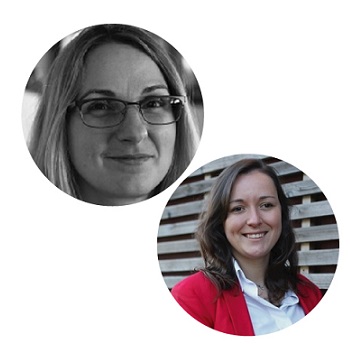
TECHNICAL WRITER and TECHNICAL COMMUNICATOR - FEEDZAI
Krisztina Nagy and Sara Duarte
Building bridges for a documentation team
At the beginning of the life cycle of a tech company communication is easy. The company is small, everyone talks to one another, the product is simple. As the product and the company grows, teams split up and specialise, and they segregate knowledge. Silos are built, but usually the necessary communication channels between them are missing until some major communication failure calls attention to the problem.
There are numerous communication needs between the different teams. Companies have to have a well-planned communication infrastructure to make the right information flow to the right audience at the right time and in the right form. The communication infrastructure has to empower and activate all the different stakeholders, needs to build different channels, and create the processes and rules that regulate their usage.
Those channels and processes are highly influenced by a large set of factors. Some may be obvious, but most of them are hidden or their impact is tricky to judge. For instance, communication technologies (high throughput network, software for video calls and chat, ERP and ticketing systems, etc.) seem to be obvious facilitators of communication, but they only build the backbone of the channels. Without structured processes and rules (who should use them for what, when and how) these channels may contribute to augmenting the chaos.
Which groups and key persons are the stakeholders of technical documentation? What are their roles? How do they interact in the different roles with different teams, different technical backgrounds, across time zones, while juggling simultaneous projects?
We will look at some real-life examples to see that there is no one-size-fits-all solution, and how the documentation team needs to adjust to the company growth.
30mins
About Krisztina
Since her studies in programming, she has been working in several market-leading companies like Microsoft, OutSystems and Vision-Box.
About Sara
She started her professional path as a translator in a start-up company, with a mission to develop a platform of online commerce for companies.
12.45
14.30

PROFESSOR - UNL, YGroup and Aromni
António Câmara
Augmenting Reality, a New Voice for Customers
We live in a Real World but the Internet has been developed mostly in the Digital World. Augmented Reality (AR) provides the bridge between the Real and Digital Worlds.
This bridge will be implemented via digital layers. These layers will be digital twins of real places, objects, and activities. They may be also new virtual location-based experiences. The result will be a new Internet of Everything (IoE) where the Augmented World (AW) will be our new browser.
In this new browser, customers will find a new voice as there will be two-way communication channels to interact with brand owners. They will also find new digital spaces to interact with other customers for every existing place, object and activity. Those spaces may be location based virtual post-its accessed via smartphones or AR glasses, or simply the new AW browser on the desktop.
Customers become owners after purchase transactions. The sharing platforms turns these new owners into potential renters of places (i.e., Airbnb) and objects (i.e., Slock.it). The AW browser will facilitate both the purchasing and sharing stages.
AR glasses are foreseen to hit the consumer market in three years. They will accelerate these ongoing developments made possible with the growing smartphone capabilities. But their impact will be mostly felt through the new experiences that they will enable. These experiences will surprise, delight and be useful for the individual consumer. They will also open the possibility to create new conversational environments for customers based on semi-holographic imaging and artificial intelligence.
The experience gained in hundreds of YDreams projects, developed in thirty countries for 50 Fortune 500 companie,s will be used for illustrative purposes. Current research at the New University of Lisbon, as well as new Aromni developments, will be also reported to anchor future visions.
45mins
About António
António Câmara was a pioneer in researching simulation, geographical information systems, virtual reality and augmented reality. He has co-founded YDreams Global, Azorean, Ynvisible, The Inventors and Aromni. António Câmara has received over 20 national and international awards, highlighting Prémio Pessoa in 2006, and one of the Entrepreneurs of the Year Awards from the European Union in 2008.
15.30

PHD STUDENT UNL - EUPATI
Rita Francisco
Moving from talking to patients to talking with patients
Patient involvement,patient/clinician shared decision-making, patient empowerment, patient-centricity are all concepts illustrative of the new paradigm that both research and medicine have been experiencing.
Contrarily to what has already been seen in many other areas of knowledge and services, the patients view about their health has often been disregarded with clinicians and researchers taking the driver's seat and being the sole decision-makers. This is changing. The patient perspective is being perceived as valuable, useful and unique. But, giving voice to patients implies (or should always imply) education, reliable and accessible information, and empowerment. This new era is riddled with communication challenges and opportunities.
This presentation will explore 2 case studies of institutions and projects developing ambitious strategies to make patient participation more efficient and informed.
30mins
About Rita
She is currently doing her PhD focusing on better understanding immunological affectation in Congenital Disorders of Glycosylation (CDG) patients. Rita is also a volunteer at the Portuguese Association for CDG, where she is the CDG patient advocate manager.
16.00

TECHNICAL KNOWLEDGE MANAGER - Feedzai
Nuno Grazina
Growing a Technical Documentation team the right way with the right technical challenge
Finding skilled Technical Writers is hard. Finding that excellent Tech Writer that fits your team and your company might seem impossible. There are so many variables at play that when you need to bring new members to a Technical Documentation team, you must carefully consider what you need to evaluate to detect the best candidates. Otherwise you will either miss your target by looking at it from a very narrow perspective or by obtaining too many unfocused data points.
Designing a technical challenge for Technical Writers that makes sense in your particular context should not just be about writing. It will most likely try to emulate a real scenario, have the candidate understand the problem, ask questions, look for information and only then propose a written solution. There will also be a healthy dose of ambiguity during the challenge, as the perfect world where the problem is crystal clear and all information is available does not exist.
Even if all these factors are intentionally tested, there’s a chance that the final decision is not straightforward, as a candidate that looks very skilled on paper might fail big or a candidate that delivers a good written challenge might not take feedback well or not fit your culture in other ways. It doesn’t mean they are bad, it just means they are not the person you are looking for at that particular moment.
This presentation will provide a personal and professional account of the author both as a hiring manager and as a candidate in Technical Writing roles. It will discuss how the sum of those experiences influenced different approaches, enabled best practices and caused several failures along the way while building the Tech Comm team at Feedzai.
30mins
About Nuno
Currently, he heads all product technical knowledge initiatives at Feedzai. The Technical Communication team delivers the docs for several components and solutions, and the entire technical training program as well.
16.45

PHD STUDENT - UA AND UNL
Denise Branco
Needs Analysis: Safety and Security and the technical translation of emotions
This study presents a new approach to needs analysis based on Integral Theory and the AQAL map (all quadrants, all levels, all lines, all states and all types) and focuses on technical texts that need to meet not only technical and scientific requirements but also emotional requirements in order to fulfill their ultimate goal. Such texts emanate from the political decisions made by sovereign member states within international multilingual and multicultural technical and scientific organizations and their supporting agencies which come together based on mutual and collaborative interests.
Given the complexity and tension of current international relations, this work argues in favor of a more complex needs analysis tool which is capable of identifying the non-linguistic variables that impact on the reception of technical and scientific information and the implementation of international standards and procedures which aim at safeguarding the peaceful use of nuclear energy and nuclear technologies.
The challenges of translating the terms “safety and security” are analyzed and discussed from the AQAL map perspective and quadrant based communication needs analysis is presented to illustrate how the decision-making process for the translator can be more informed by taking into account the societal and cultural dimensions in which the terms occur and are expected to perform.
By highlighting the importance of needs analysis, this research argues in favor of its role as an essential stage of technical documentation design and also as a requirement for technical translation purposes. Needs, wants and lacks and the gaps that need to be bridged according to the social and cultural contexts in which a text will perform are essential for the collaborative encounter between technical and scientific worldviews and the emotional dimension of collective identities and realities.
30mins
About Denise
After teaching English and Portuguese for Specific Purposes at the University of Aveiro for approximately ten years, she founded her own language service company in 2007. Since then she has been working with international industry and government bodies in the field of technical and scientific communication in the field of nuclear safety and security.
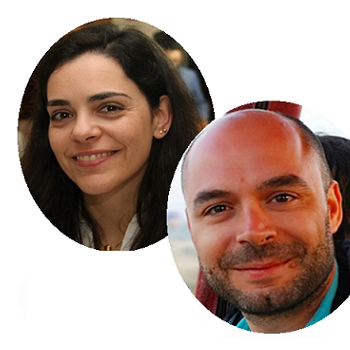
Communication Specialists - Nokia
Cláudia Santos and João Marques
Customer Experience: the future of Nokia documentation delivery formats using rich media, gamification and augmented reality
Documentation is not only about what is written by the technical writers. The way it is delivered is as important as the content being delivered. It is said to “don't judge a book by its cover", but a good cover on a great book, makes it even better and more appealing.
Having this in mind, Nokia Customer Documentation group is focused not only in producing documentation with quality, but is also focused on the way it is delivered.
Therefore, Nokia is researching for new ways of presenting and delivering content to satisfy customer expectations, and new ways of creating added value for the company, namely through rich media, gamification, and augmented reality.
With rich media documentation it is possible to add advanced features, that for example expand or float the content, to encourage readers to interact and engage. While text documentation displays mainly words and graphics, rich media documentation has more ways to involve the reader.
Gamification is the use of game elements and game design technics in a non-game context. Therefore, it is possible to have customers, both internal and external, more engaged and connected with the documentation and the product.
According to Antonio Camara, augmented reality is the bridge between the real world where we live, and the data world where internet has been developed. Nokia wants to also bring documentation to the real world and has already showcased a pilot project in a Wroclaw event.
The future is set, and Nokia documentation team is leading the way.
30mins
About Cláudia
Cláudia Santos is a Team Leader, Communication Specialist and Technical Writer at Nokia. She started in Nokia in 2007 as a technical writer in the hardware field. She then moved to software, and has been working as Customer Documentation Project Manager in several projects located in different countries.
About João
João academic background is in the Multimedia and Interactive Medias field, as well as in Medical Informatics. He has professional experience in customer and user experience, digital medias and marketing applied to different industries: education, retail & distribution, health-care and telecommunications.
18.15
venue
Department of Languages and Cultures
University of Aveiro
address
University of Aveiro
more information
Campus Universitario de Santiago
3810-193 Aveiro, PortugalAccommodation Alternatives
Where to stay, close to the venue.
funfacts
7
nationalities
19
speakers
12
companies
and universities120
participants
register
Registration is mandatory for all speakers and participants.
Deadline:
Speakers - 14 September
Participants - 15 NovemberParticipants
€70
- Two days colloquium
- Colloquium Kit
- Coffee break
Speakers
€100
- One 20 minute presentation
- Two days colloquium
- Colloquium Kit
- Coffee break
EXCLUSIVE
Special prices
- Students, teachers and APCOMTEC members - 50% (student card or APCOMTEC membership proof is requested)
- CLLC and CLUNL members, UA and UNL students, Nokia employees - FREE (employee card, student card or membership proof is requested)
Register now
Organisation




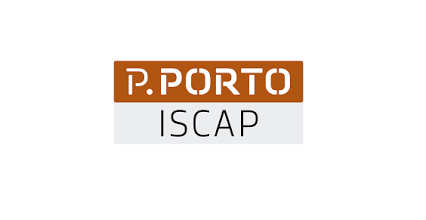

Organisation Committee
- João Marques
- Cláudia Santos
- Maria Teresa Roberto
- Rute Costa
- Sara Carvalho
- Raquel Silva
- Teresa Alegre
- Cláudia Ferreira
- Alexandra Albuquerque
Scientific Committee
- João Marques
- Cláudia Santos
- Maria Teresa Roberto
- Rute Costa
- Sara Carvalho
- Raquel Silva
- Teresa Alegre
- Cláudia Ferreira
- Alexandra Albuquerque
- Juan Carlos Diaz Vásquez
- Frieda Steurs
